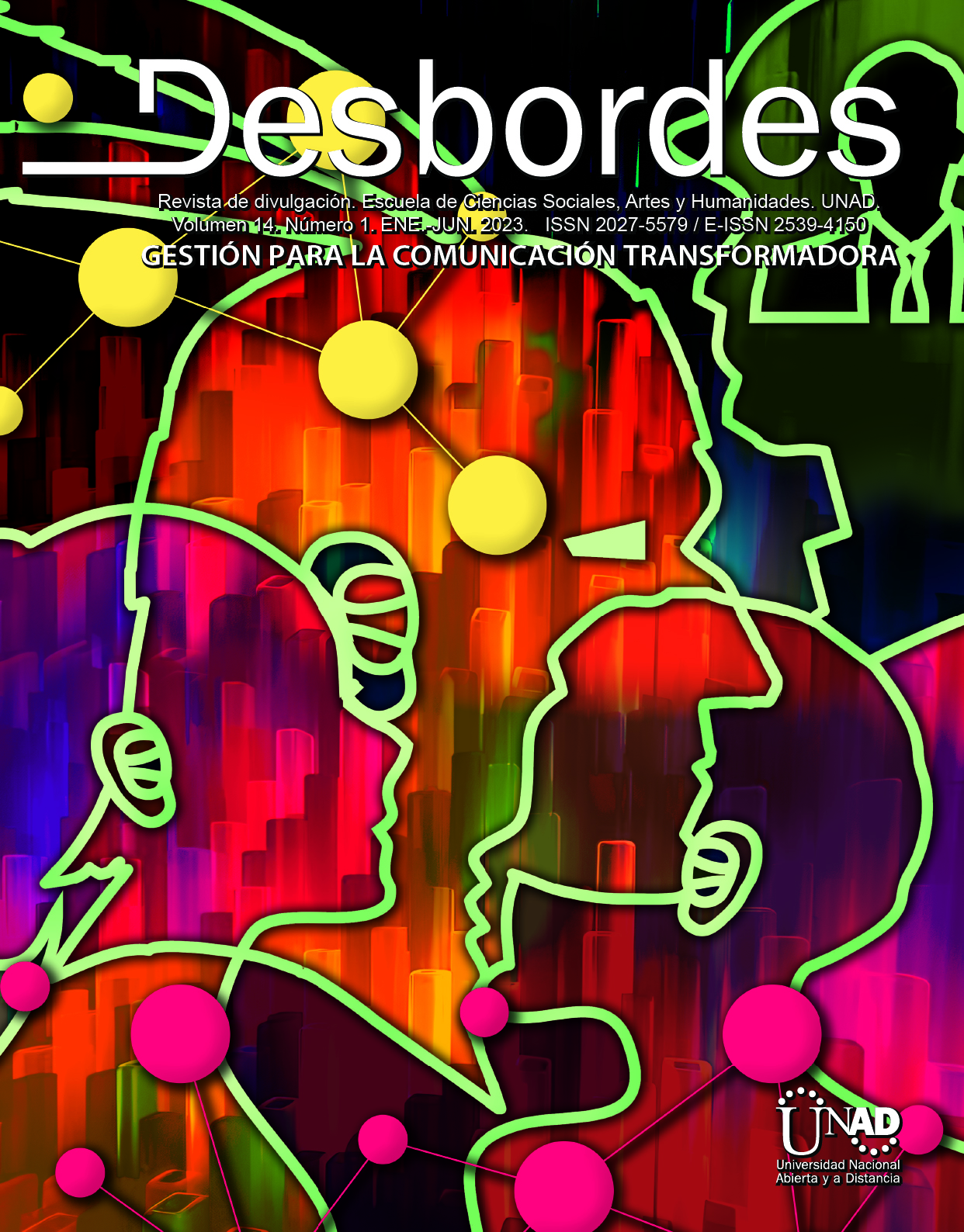Copyright (c) 2023 Desbordes

This work is licensed under a Creative Commons Attribution-NonCommercial-ShareAlike 4.0 International License.
La revista Desbordes se reserva el derecho de reproducción total o parcial del material en medio físico o digital, así como su inclusión en bases de datos, hemerotecas y demás procesos de indexación (SIRes).
La aceptación o rechazo de artículos postulados dependerá del concepto final emitido por los pares evaluadores y el aval de los comités editorial y científico.
Las ideas y conceptos expresados son responsabilidad de los autores y, en ningún caso reflejan las políticas de la UNAD
STORIES TO RECONCILIATION
Interventions for peacebuilding based on storytelling are common in conflict settings, as dynamics that seek to promote rapprochement between people, their experiences, their expectations and in general their stories, so that in speaking and listening they can be generate individual and collective transformative dynamics. Various international reference experiences allow us to infer that storytelling, as cultural production, is applicable and provides tools to communities to develop processes of dialogue, reparation and reconciliation, as well as healing and resilience through various dynamics or languages, written, oral, visual, musical, artistic, and even today, in the new languages of the digital world. However, most of the revised storytelling experiences do not frame their intervention in structured reconciliation processes, but rather are presented as dispersed and not articulated operations in the territories; Likewise, they have been carried out intuitively based on the experience of the team workers, as a practice of healing and rapprochement between individuals and communities, without a defined conceptual and methodological framework that allows establishing the orientation of each of the experiences. In this way, a methodological proposal is structured to link storytelling interventions with peace and conflict studies based on Jürgen Habermas's Theory of Communicative Action, which establishes a general theoretical framework, and likewise, a specific action framework for the contexts of application according to the approaches Do no Harm and Conflict Sensitivity; The previous conceptual perspectives allow defining specific orientations for the development of storytelling scenarios both as a healing process linked to the individual plane, as well as collective processes of transition from the past to the possibilities of generating collective stories to visualize a common future. Finally, the possibility of applying the methodology in the educational field is raised as an educational exercise for the culture of peace.




